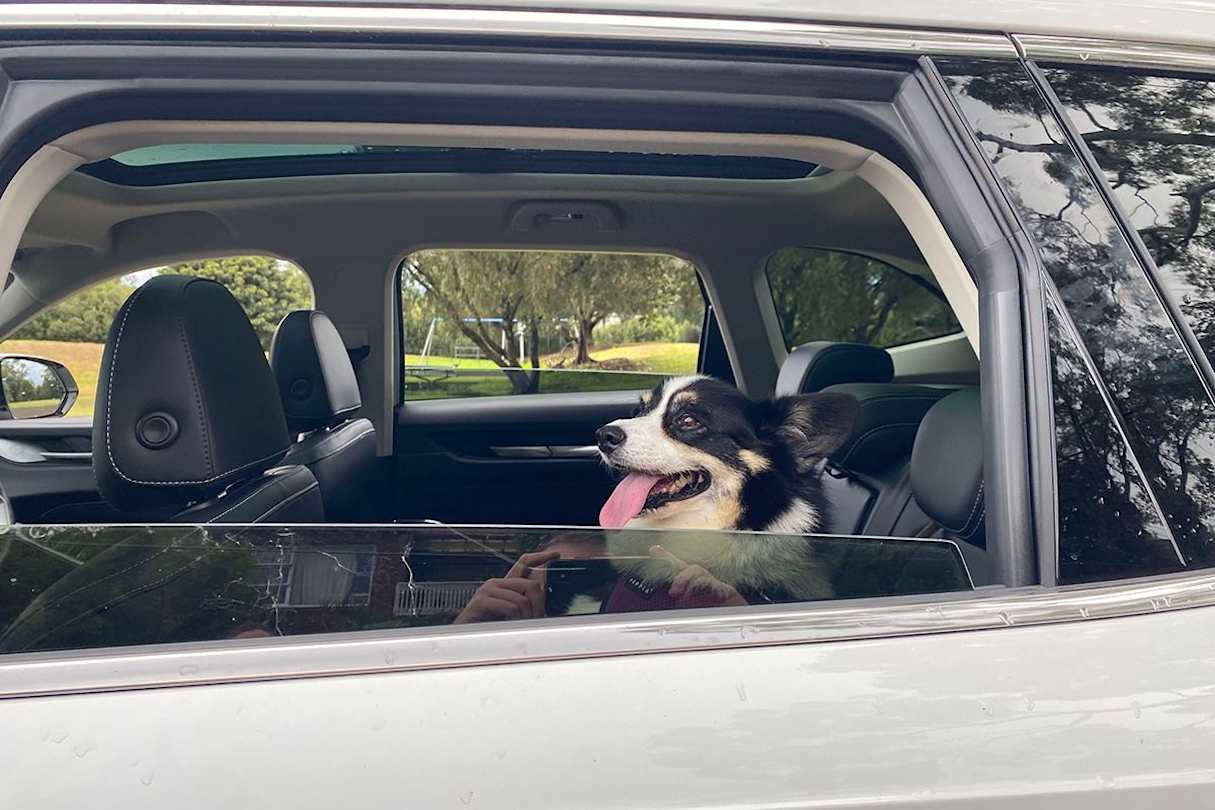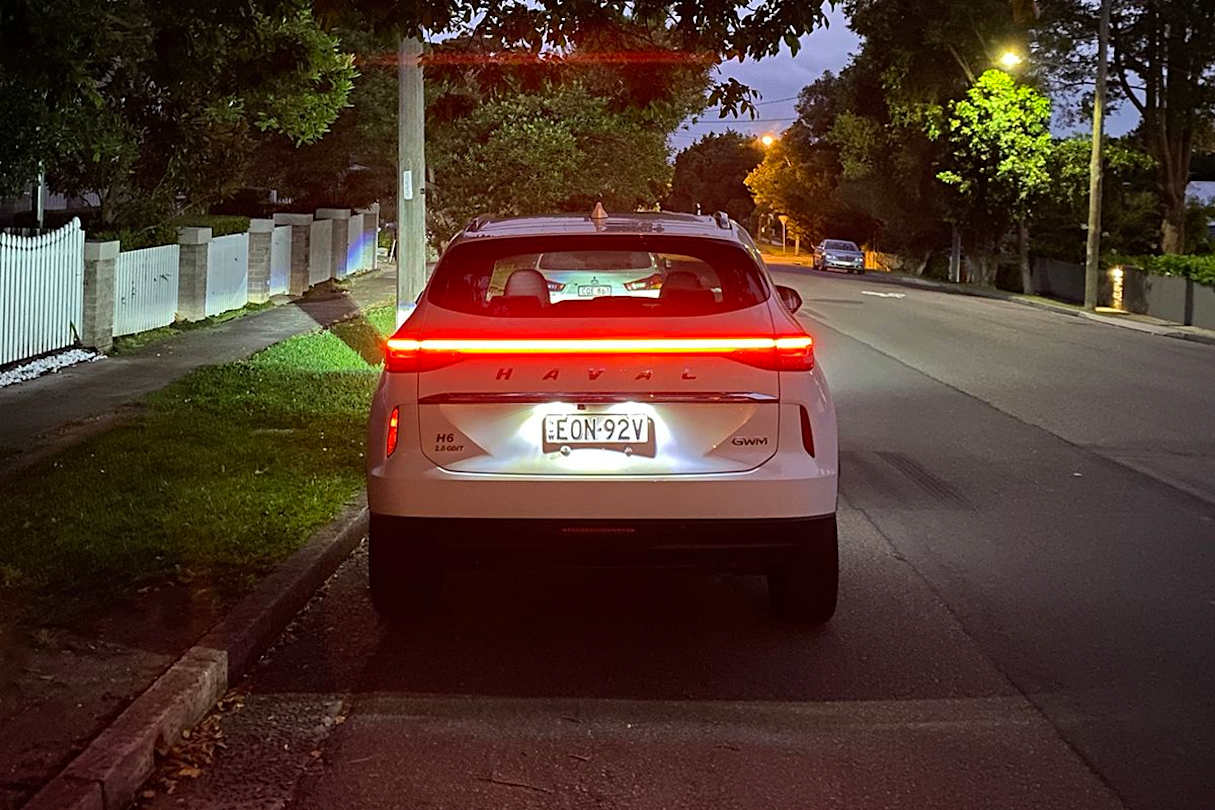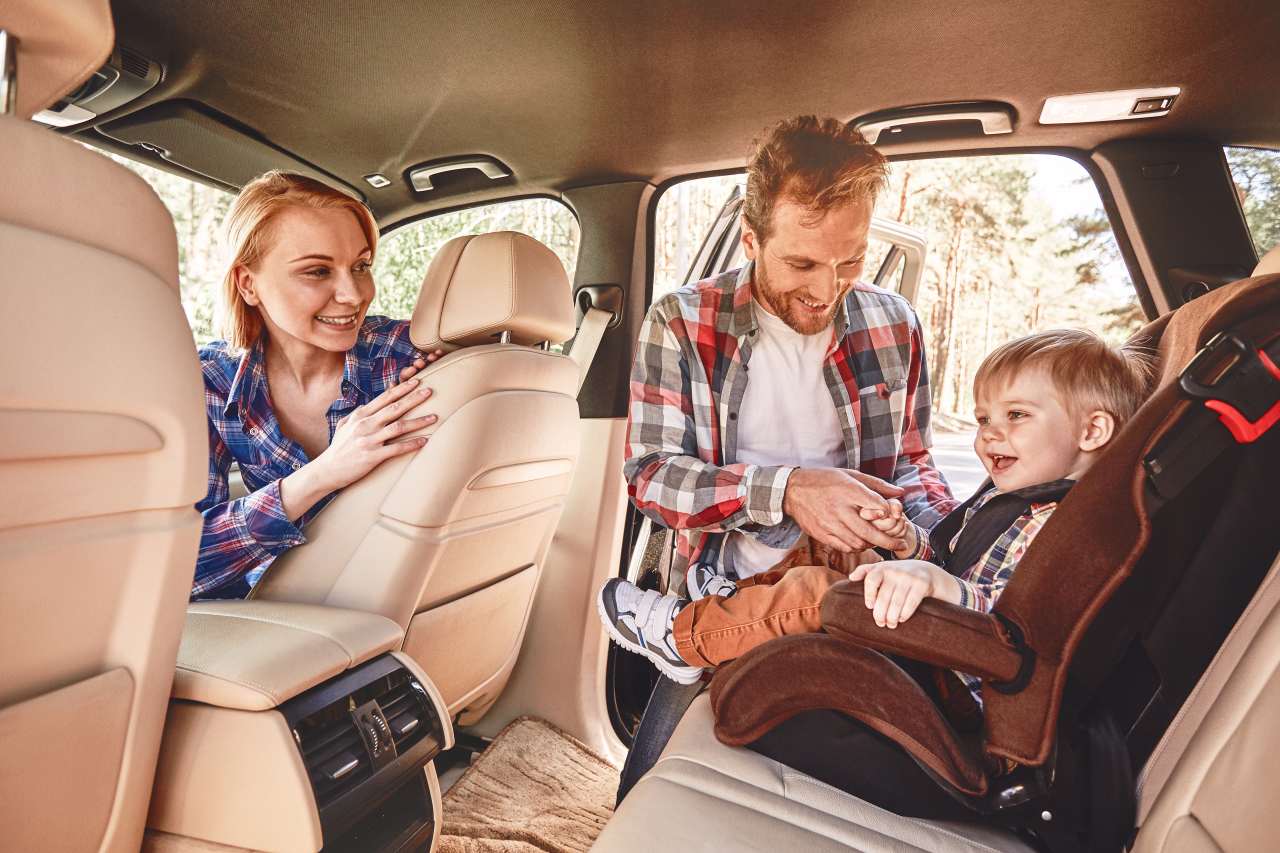The medium SUV field has always been stacked with heavy hitters like the Mazda CX-5, the Toyota RAV4, the Hyundai Tucson and the Kia Sportage.
So can the Haval H6 mix it with the big boys? Andrew 'Chesto' Chesterton puts the H6 Ultra to the long-term test to find out.
GWM Haval H6 2022: Ultra AWD
| Engine Type | Turbo 4, 2.0L |
|---|---|
| Fuel Type | Premium Unleaded Petrol |
| Fuel Efficiency | 9.8L/100km (combined) |
| Seating | 5 |
| Price From | $23,650 - $29,260 |
| Safety Rating |
|
Part 1: February 2022
Let it not be said that we at CarsGuide don't go above and beyond to answer the hard questions nobody else is brave (or stupid) enough to tackle.
Need an example? What happens if the car you're driving has keyless entry and push-button start, but once you've got the engine running, you remove the key from the car?
Will it drive 500m or so and then stop? Will it somehow alert you that the key is missing? Or will it simply refuse to move away from the key at all?
As it turns out, the answers to those questions are, sadly, no, no and definitely not.
.jpg)
I know because my Haval H6 Ultra has the aforementioned push-button start (part of a heap of cool tech features this SUV arrives with), and I accidentally, and unwittingly performed this exact experiment.
My wife and I were heading out on an errand, and she had the key in her bag. But once I'd loaded up the destination and she saw it was about a 30-minute drive away, she promptly bailed on me, taking her bag with her.
Cut to me driving off, the engine happily running, and me blissfully aware that anything was amiss. And that's how I stayed, until completed my cross-city mission, killed the engine, and went to lock the car.
No key. The car wouldn't restart. And the only solution was to send a very expensive - and a little confused - Uber to collect said key and deliver it to me.
.jpg)
Now, is any of that Haval's fault? Nope. You can't idiot-proof everything, and, as it turns out, I'm a special kind of idiot. Still, it's handy to know, right?
Still, it was a mere speed bump in an otherwise fairly happy month with the H6 Ultra, which is a seriously value-packed SUV considering its sub-$40k drive-away price point.
Our Ultra sits second from the top in the H6 family, above the Premium and Lux variants but below the Vanta. It's yours for $38,990 drive-away, which - given the standard kit - presents pretty good value in this segment.
As is often the case with Haval products, you really don't want for much in the way of standard features here. While all H6 models get 18-inch alloys (save the Vanta, which gets 19-inch wheels), LED headlights, tail lights, DRLs and rear fog lamps, and Apple CarPlay, springing for the Lux adds things like front LED fog lights, a leather steering wheel, roof rails, dual-zone climate, faux-leather seats that are heated in the front and adaptive cruise.
.jpg)
Our model, the Ultra, ups the equipment game further still, adding a big sunroof, an electronic boot, a bigger 12.3-inch touchscreen and a head-up display, heating and ventilation for the front seats and wireless charging for your mobile phone.
That's plenty of kit, and given the H6 Vanta really only adds the bigger alloys and some blacked-out style bits (but also only costs $1000 more), either of the top-tier models will deliver everything you really need or want.
And that's probably the thing I've enjoyed most about this Haval over our first month of ownership – it looks and feels like a nice place to spend time.
The interior especially is nicely done here. The materials all feel nice under touch, there's a nice and premium-feeling blend of colours, patterns and materials, and a kind of angle, sharp-edged design to the dash layout that really works here.
.jpg)
All H6 models share the same lightly underwhelming engine, though – a 2.0 litre turbo-petrol engine that produces 150kW and 320Nm. It pairs with a seven-speed dual-clutch automatic and powers the front wheels.
It's not a big engine, and while it feels far more dynamically sorted than the smaller Haval Jolion, our H6 still has the irksome habit of delivering all of its power in one fat lump, causing much front-tyre wheel spin when you're too heavy with the throttle. It's more embarrassing than anything else, as heads tend to whip around as though some hoon is cutting labs of suburbia every time those front tyres light up.
.jpg)
There's also a ragged edge to the rear suspension, which is interesting because it soaks up minor imperfections with little to no stress. But when you hit a bigger, sharper bump, there can be audible thump from the rear axle, like the suspension is knocking against its limit.
Still, it's big (think 600L seats up, 1485L seats down), comfortable and loaded with kit, and that was enough to keep me smiling over our first month together.
Acquired: February 2022
Distance travelled this month: 822km
Odometer: 3501km
Average fuel consumption for February: 12.2L/100km
Part 2: March 2022
Forget the final frontier — space has actually spent the past four weeks parked out the front of my place in the shape of the Haval H6 Ultra. And it has come in very, very handy.
Now, I’ve long been a believer that we should treat our cars a bit like we do the fresh-food shop. What’s the point in buying more than your need, if all those extra apples and bananas are just going to end up going unused, uneaten and in the bin?
Same goes for seats and boot space, right? If you live in the inner city, have a small family, and you rarely venture off road, then why spend up big on a LandCruiser 300 Series or some seven-seat family hauler, just to have a third row of seats you’ll never fill, high-tech off-road equipment you’ll never use, and a fuel bill that will punish your foolishness every time you hit the bowser?

My family? It’s just me, my wife, and my pint-sized puppy. And I’m yet to hear the corgi complain about rear-seat leg room even once, no matter how small the car I have parked out the front. Which is why my new-car shopping list has always been dominated by a hatchbacks, small SUVs, and other fuel-frugal, space-saving options.
And yet there has been several occasions this month in which this long-held belief has been questioned, and when the convenience of having a car that’s bigger than your everyday needs has been a massive blessing.
The first occurred when, after months of procrastinating, my wife and I finally collected the push-bikes we’d bought ourselves for Christmas. With no roof straps or tow-bar-mounted bike racks, I was wrestling with just how the hell we’d get these two fully built, adult-sized bikes back home with us. I had even contemplated leaving the car then and riding the bikes the 10km or so home, before getting a cab back for the Haval.
See, the H6 isn’t massive. It fits into the mid-size SUV camp (so think Mazda CX-5, Toyota RAV4 or Subaru Forester for reference), with five seats and dimensions that don’t make it too big a pain in the backside to park in tighter spaces.

But opening the boot reveals a Tardis-style storage space, that’s way bigger and way more practical than you might expect.
With the rear seats in place, you’ll find a seizable 600-litre storage area, with a flat load base, wide edges, and enough room to swallow luggage, shopping, you name it.
But fold this seats and the space grows considerably. Haval reckons you get some 1485 litres of room, but as with all cars, that number is calculated using a combination of dark magic and tom-foolery, and involves perfectly filling every air pocket from the boot floor to the roof lining. So unless you plan on filling the boot with water, that number is more of a guide for comparative reference.

But in real terms? The H6 serves up lots of space. Enough, it turns out, to lay two full-size bikes on their sides, with enough spare room for the the bags and other trinkets I’d forgotten to take out before heading to the bike shop.
It’s seriously impressive, and left me very happy that my maiden cycling voyage wasn’t a 10km slog along main roads, dodging potholes and homicidal taxi drivers.
Happily, that room is also replicated in the backseat, where there is plenty of headroom and legroom, and a general sense of space and airiness for backseat riders. There’s also two USB charge points for devices, seatback pockets, and air vents (though no temp controls).
It’s not the only surprise I’ve had this month, some pleasant, others less so.

On the positive side of the ledger, I’m loving the look and feel of the Haval’s almost-premium cabin. Sure, some of the materials aren’t what you’d expect (the faux-leather seats, for example, likely won’t fool anyone), but the layered effect of textures, materials and angles never gets dull, and the tech integration is on point, too, including the sharp head-up display, the big central screen, and the ability to effectively hide your iPhone cable when you’re plugged in.
On the less positive side? I know safety is important, but the standard settings the H6 are verging on ridiculous. Brake too hard, and the hazards will flash. And I’m not talking emergency braking here, just hitting the anchors too hard as you approach a round-about will do it. Activate a blinker and the main screen swaps to a giant camera display that live-feeds the world outside into the cabin. If you’re stopped at a red light for a couple of minutes, you won’t be changing songs or updating your address, as you’re effectively locked out of the tech until you deactivate the indicator.
This isn’t just a barb at Haval, either - they’re not alone in this - but I’ve never understood the importance of showing me what’s happening in front of the car when I’m stopped at a light. Isn’t that what a windscreen is for?

Also slightly weird is the way the Haval automatically winds down the volume on the stereo when you activate the indicator, as though the volume is somehow distracting.
I’m sure these features can be adjusted or deactivated, but it’s slightly weird right out of the box.
That said, safety remains a strong suit here, with the Haval H6 being awarded a five-star ANCAP rating, and packing a huge range of active safety systems designed to not just keep you safe in a prang, but to help you avoid them altogether.
So, definitely more ups than down this month, with the Haval surprisingly winning the space race a particularly fond memory. Now, let get to quirk ironing out some of these safety interface quirks and we’ll be onto something here.
Acquired: February 2022
Distance travelled this month: 822km
Odometer: 4323km
Average fuel consumption for March: 12.4L/100km

Part 3: April 2022
It’s not easy trying to make a name for yourself in the medium-SUV segment. There are some seriously good, and seriously popular, models in there, like the Subaru Forester, the Mazda CX-5, and the all-conquering Toyota RAV4 Hybrid.
All of which come from brands that have a long and proud history in Australia — and some, like Mazda and Toyota, that we kind of, almost, think of as actual Australian brands.
The point is, it's not an easy nut to crack, and even less so when the model you want to do it with, the H6, belongs to a lesser-known (though quickly growing in popularity) Chinese brand in Haval.
.jpg)
You pronounce that as if it rhymes with gravel, by the way. Just in case someone asks you at a BBQ.
So what does the H6 bring to the party? Simple. It promises to do everything those big-name models can, but with more fancy equipment and for less money.
It's a big ask, I know, but having now spent three months behind the wheel of the Haval, I can tell you that its certainly got the value/space/practicality proposition bang-on, even if it's lacking in some driving refinement and dynamic prowess.
.jpg)
And I guess that sums up my time with the H6 better than anything else. Great at some stuff, not so great at others, with the biggest variable being where its potential owner's priorities lies.
Honestly, the value stuff is super impressive, and if you're stepping out of an older vehicle you'll for sure be wowed by all the shiny stuff that's included. Like the big 12.3-inch touchscreen, head-up display, heated and ventilated front seats, wireless charging, etc.
Then there's the 18-inch wheels, the LED lighting, the premium-feel puddle lights and all the rest. And all of that for $39,990 drive-away for our Ultra model.
.jpg)
So value? Tick. Practicality? That's a tick, too.
It's a mid-size SUV, sure, but there's large SUV space on offer here, whether you're transporting people or passengers, and the 600 litres of boot space with the rear seats in place (1485 litres with them folded flat) is plenty for just about everything you'd need to carry. Including, as it turns out, two adult-size push-bikes, with space to spare.
Honestly, its the thing I probably appreciated most over my time with the Haval. No matter what transporting challenge we faced, the H6 was up to it. If yours is a growing family, then you'll be impressed by the cargo room on offer here.
.jpg)
Safety? Yep, five stars. But we've covered all that, haven't we?
Okay, what about peace of mind? Again, it's a tick. While Chinese car brands are more mainstream now than ever before, it's undeniable that there are some out there cautious about taking a chance on a carmaker that hasn't been in Australia as long as the big Korean or Japanese marques.
Haval counters that with a pretty strong warranty, offering full seven-year, unlimited-kilometre coverage, which is definitely ahead of some of its mainstream competitors.
.jpg)
Your first service is due at 10,000km, then it's every 12 months or 15,000km after that. And the brand’s capped-price servicing plan should see your costs come out at $1760 for the first five years. That's around $350 per year, on average.
With all of that in mind, the H6 is a solid offering, depending on what you're looking for from your SUV.
Driving dynamics are not a strong suit here. Not that it feels rotten to drive, more that it lacks some of the composure on offer from other brands.
.jpg)
The power delivery isn't the smoothest, either. And I reckon the suspension could benefit from an Australian tune, just to smooth out some of the edges.
So, at the end of all that, it all comes down to what you value in a vehicle. Because if it's value you value, you'll find plenty of it here.
Distance travelled this month: 657km
Odometer: 4980km
Average fuel consumption: 12.6L/100
Verdict
Space, goodies and value galore here, and if that's what you value in your family SUV, then the Haval H6 should be on your test-drive list. But if alpine passes and switchback turns feature in your dreams, then something a little sportier might be in order.
Pricing Guides




.jpg)








.png)









.jpg)
.jpg)
.jpg)


.jpg)